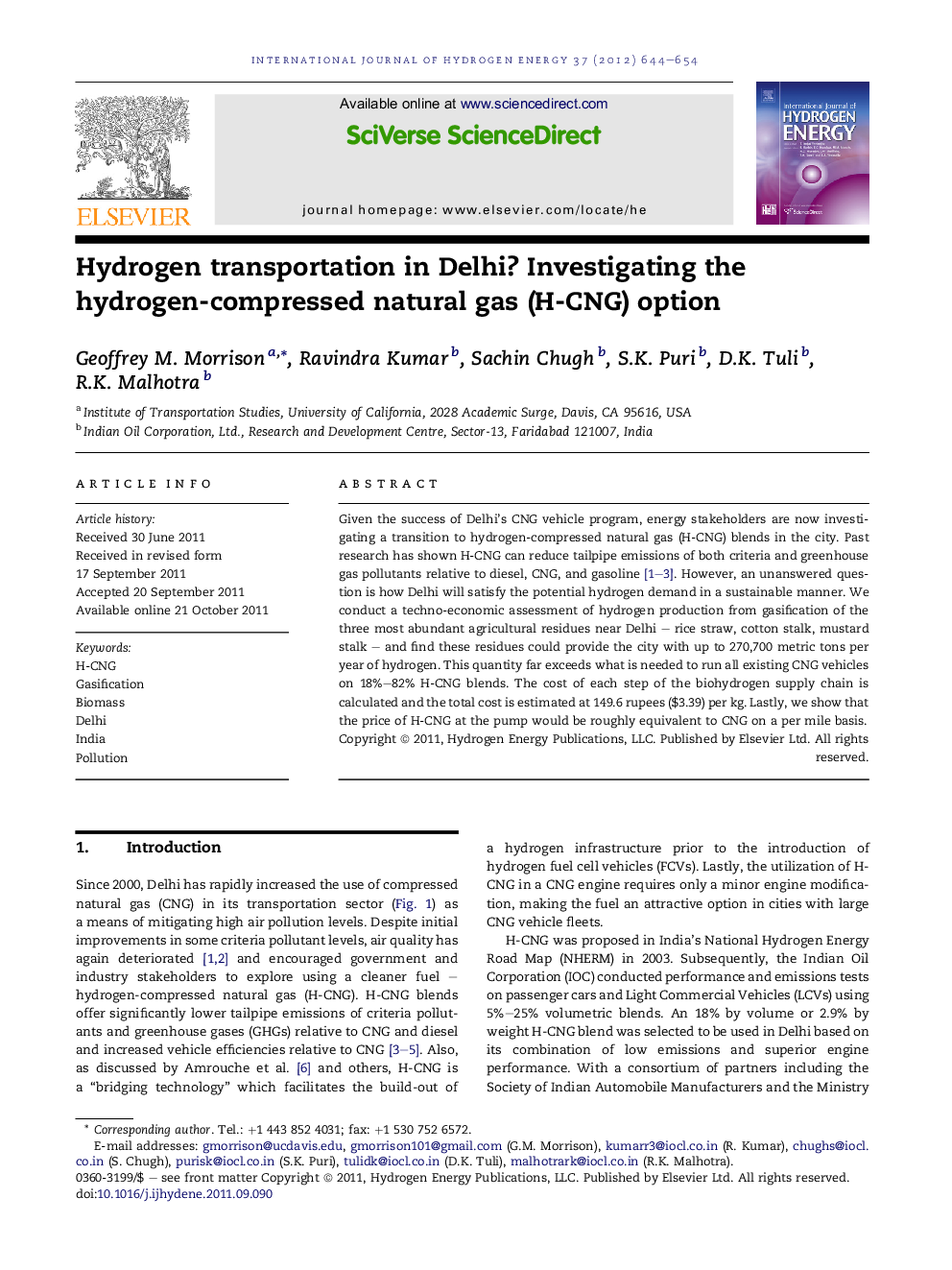| Article ID | Journal | Published Year | Pages | File Type |
|---|---|---|---|---|
| 1277178 | International Journal of Hydrogen Energy | 2012 | 11 Pages |
Given the success of Delhi’s CNG vehicle program, energy stakeholders are now investigating a transition to hydrogen-compressed natural gas (H-CNG) blends in the city. Past research has shown H-CNG can reduce tailpipe emissions of both criteria and greenhouse gas pollutants relative to diesel, CNG, and gasoline [1], [2] and [3]. However, an unanswered question is how Delhi will satisfy the potential hydrogen demand in a sustainable manner. We conduct a techno-economic assessment of hydrogen production from gasification of the three most abundant agricultural residues near Delhi – rice straw, cotton stalk, mustard stalk – and find these residues could provide the city with up to 270,700 metric tons per year of hydrogen. This quantity far exceeds what is needed to run all existing CNG vehicles on 18%–82% H-CNG blends. The cost of each step of the biohydrogen supply chain is calculated and the total cost is estimated at 149.6 rupees ($3.39) per kg. Lastly, we show that the price of H-CNG at the pump would be roughly equivalent to CNG on a per mile basis.
► H2 needed to run all 344,000 CNG vehicles in Delhi on 18%/72% H-CNG: 12.8 kT/yr. ► Availability of rice straw, cotton and mustard stalk residues within 150 km of Delhi: 4717 kT/yr. ► The total cost of biohydrogen in Delhi: 149.6 rupees ($3.39) per kg. ► Sensitivity analysis: range of biohydrogen cost 123–199 rupees ($2.78-$4.51) per kg. ► The cost per mile of H-CNG is expected to be on par with CNG.
